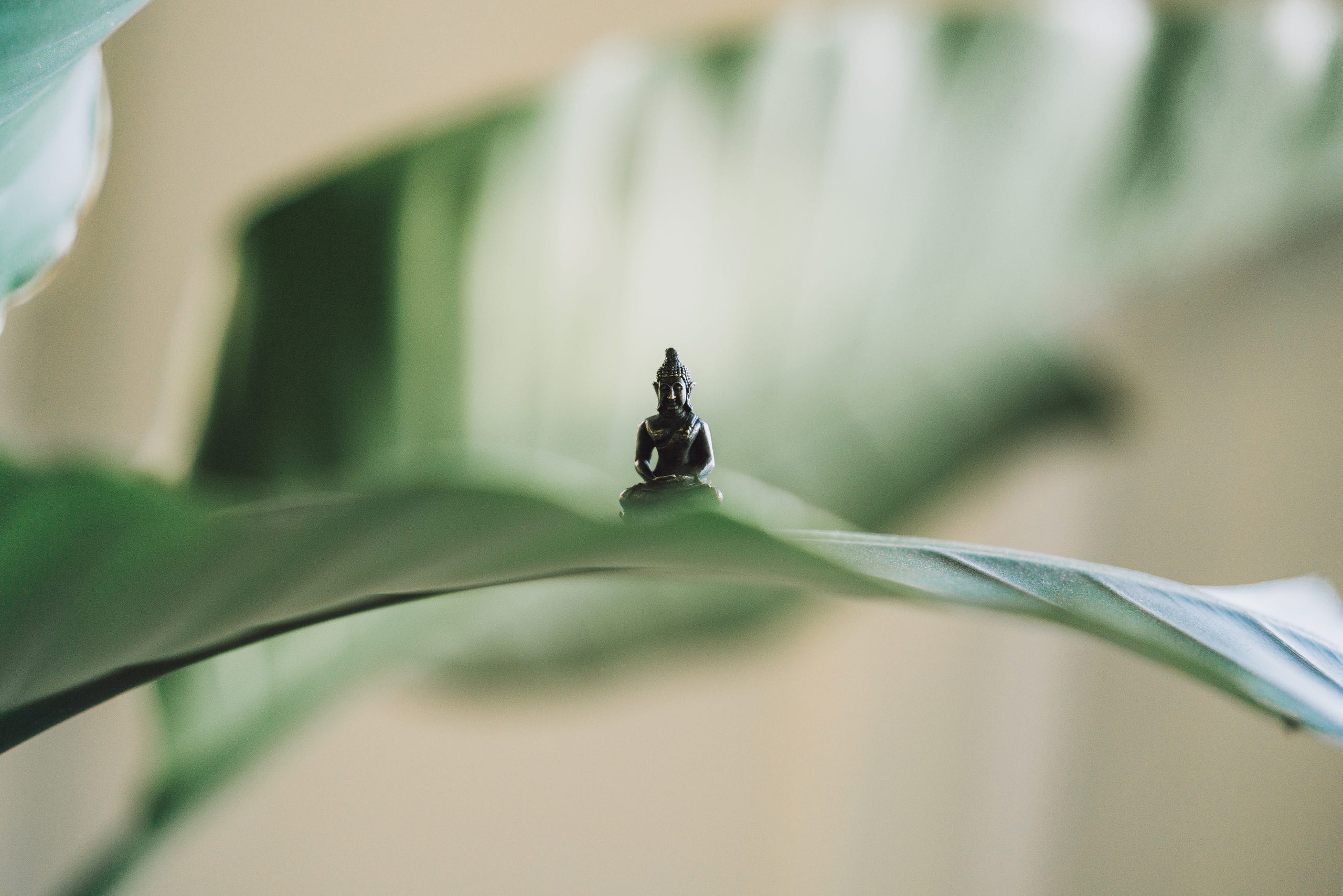The internet is saturated with content about mindfulness. You’ll be hard-pressed to find a more widely discussed phenomenon in a wider array of different spaces — from business to technology to mom-blogs to the world of sports. The buzz about mindfulness continues to be loud. There are apps, journals, classes, books, podcasts, and so on. Each with its own method and practice to advocate for.
I’m guilty of having jumped on many of these bandwagons myself. I’ve tried, and still have on my iPhone, many different mindfulness and meditation apps. Despite having gotten into Buddhism and meditation long before the iPhone was even released, I still felt the pull of the new and fresh technological takes on this ancient idea.
But what I’ve lost in all of this buzz about mindfulness — and what I think many of us have lost — is the simplicity of it. And the thing about mindfulness is that the more simple you keep it, the better it tends to work. For one, you’re much more likely to keep mindfulness a habit if it’s simple. Any steps to follow or pre-work you need to do before you become mindful will eventually be a barrier to actually doing it.
Even the use of the word “mindful” can serve as a barrier. After all, most mindfulness guides urge us to pay attention to what’s happening in our head as we sit. Or if we’re physically doing something, they urge us to do it with pure focus on that thing. It can actually be exhausting to do. Or at the very least, it can seem exhausting to someone who’s not doing it, or has never done it.
Surely, there is a better way, right?
The Alternative Notion: Rest
The reasons we get into mindfulness are many. We hear about all sorts of benefits that people in all different kinds of situations get from it. Executives gain the ability to focus better and for longer periods of time. Parents claim to be more patient and attentive to their kids. Athletes claim they can better get into the zone. Nearly everyone reports a reduction in stress and anxiety.
It’s that last benefit — the reduction in stress and anxiety — that I think gets lost when we introduce all this variety and regimentation into mindfulness. And because of that, it becomes a barrier to entry, and re-entry. It’s not unlike what’s happened to diet and exercise over the last few decades. We want to put healthy foods and drinks in our bodies. We want to move our bodies in a way that keeps them healthy. But the variety of products and practices becomes overwhelming. So may people simply don’t bother.
I was feeling this particular brand of overwhelm just a few days ago. I was buried in work. I had tasked myself with doing a new meditation practice for at least 10 minutes, twice a day. Most of the things on my to-do list weren’t close to being done. The hours were ticking away. I felt stressed and anxious.
And in a move I can’t quite understand why I made, I got up from the chair in my home office, went outside on my back deck, and just sat down in a chair. I just sat there and stared at one of the boards of my house. I didn’t light a candle. I didn’t sit in the lotus position. I didn’t set a timer. I didn’t open up an app. I didn’t look at a list. I just sat and stared, until I didn’t feel as stressed or anxious anymore.
I didn’t record my thoughts. I didn’t repeat a mantra. There was no structure, there was no goal. I just sat and let my mind rest.
Rest. That’s the key. My mind decompressed and rested. Thus, so did my body.
Deep vs. Shallow Rest
That’s what we miss when we introduce a lot of structure and pre-work into our mindfulness practices. We miss the part where we let our minds rest — actual rejuvenating rest.
The rest period is different for each person, and for each situation. Sometimes, you need 10 or 15 minutes of rest, and you can be ready to get up and go again. Sometimes, you need more. But whatever the case, we shouldn’t make the mistake of diluting our rest. Rest should be deep to be effective.
In other words, true, rejuvenating rest should be stillness and quiet. Any kind of stimulus or diversion — even if you consider it mindless in nature — doesn’t allow for deep rest. The time we spend curled up with a good book, watching a show, listening to music, or anything like that may be helpful. I too engage in all of that. But it’s not rest in the same way simply sitting in the quiet and stillness is. And so it won’t bring you the same kind of benefits.
And I don’t mean to say that shallow rest isn’t worth engaging in. It is. But that’s mostly because it’s fun and often energizing. But things that are energizing aren’t restful. The energy we feel after doing a recreational activity isn’t the same as the energy we have after deep mental rest.
Only 2 Rules
The great thing about deep rest is there’s no how-to when it comes to doing it. There’s no process, no guide, no practice per se. All there is are 2 rules:
- You sit alone, with no expectation except to rest your mind and body.
- As little stimulus as possible (i.e., no companions, no apps, no artificial sound, no reading, etc.)
That’s it. Do it as often as you feel you need to, and as often as you find it helps you. Don’t make it a routine. Don’t build a structure around it. It’s there when you need it.
In the times when I can’t bring myself to follow some sort of meditation practice to get the other benefits — this practice has helped me. And because there are no strings attached or targets to hit, I’ve found it easy to pick up and put down as I need to.







